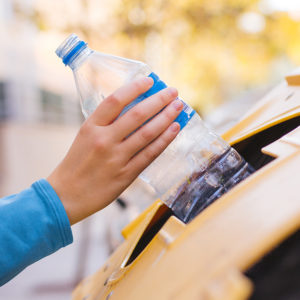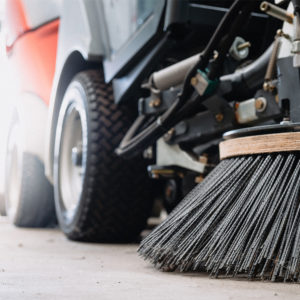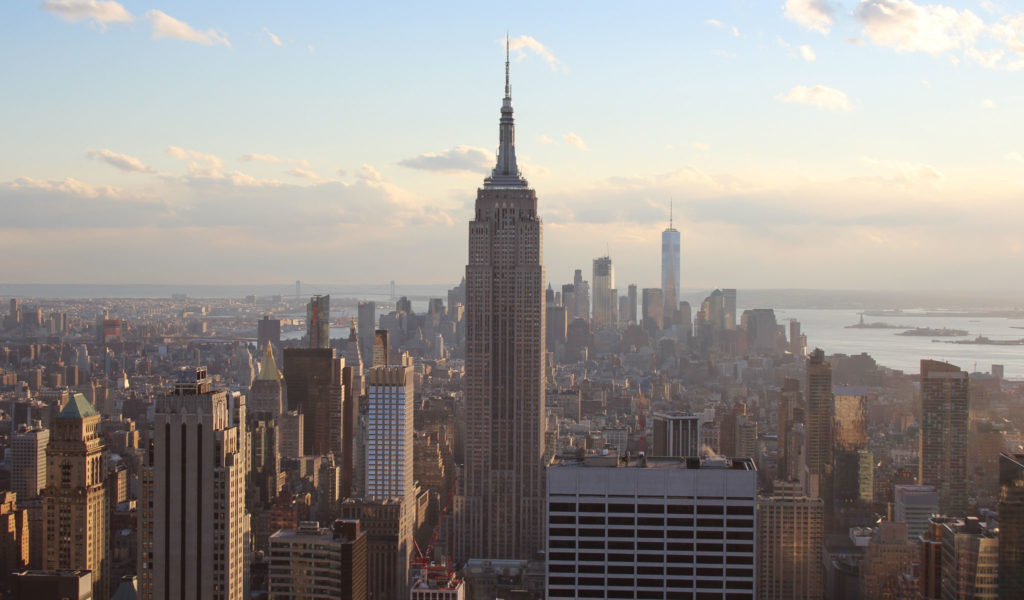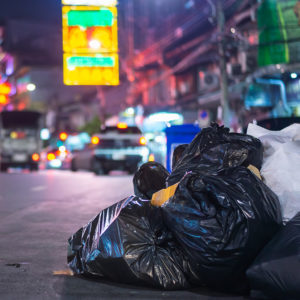New York City is often two steps ahead of the latest trend, but when it comes to sustainable waste management, they seem to be falling behind their West-Coast compatriots.
The city’s target to reach zero waste by 2030 seemed ambitious when it was announced, but now, several years on, it looks as if NYC isn’t even going to come close. With some of the lowest residential recycling rates in years, cuts to composting programs, and repeated roadblocks to commercial recycling reforms, is NYC failing its zero-waste pledge?

What is New York City’s Zero Waste Pledge?
In 2015, then mayor of New York City Bill de Blasio rolled out an ambitious plan for a zero-waste city. It was part of the broader “One New York program” that he had inherited from the previous mayor Michael Bloomberg, which addressed NYCs long-term infrastructure and environmental needs.
Mayor de Blasio aimed for a 90% reduction of solid waste by 2030, with nothing sent to out-of-state landfills. The plan called for the bulk of solid waste to instead be dealt with through recycling and composting. As part of the overarching zero waste goal, de Blasio’s plan also set forth the target of creating a single-stream recycling system by 2020, in the hopes that the simplicity of the system would encourage participation.
Back in 2015, the plan seemed ambitious, but now, seven years later with only eight remaining, the pledge of a zero-waste NYC by 2030 seems to be slipping out of reach.
How NYC’s ZW Pledge Has Lost its Way
Since NYCs zero waste pledge was made, there have been steps taken to achieve it. However, many have been less effective than hoped and others have backslid after initial implementation. The pandemic certainly took its toll, with composting programs being reduced, street cleaning cut, and disruption to private haulers in their shift to more stringent environmental and safety standards. However, many of the issues holding back NYC from its zero-waste goals are much broader than recent events.
Residential single-stream recycling, which was meant to be in place across New York City two years ago, has still not materialized. In fact, the Metal/Glass/Plastic (MGP) recycling rate last year was just 17.6%, lower than the 18.5% in the previous year, and considerably worse than sizable cities on the West Coast. It is one of the only major cities in the United States to still not have a single-stream system, and while there were reports of a new scheme being finalized in 2017/2018, it has fallen quiet in recent years.
There were also hopes that commercial recycling rates would get a boost from the Commercial Waste Zones bill, passed in November 2019, after several years in the making. This bill splits the city into 20 zones, each served by up to three private haulers. However, the most recent updates to the DSNY ‘s Request for Proposal have placed more emphasis on lower haulage costs while shifting away from asking for lower recyclable and organic waste rates than compared with refuse.
Furthermore, composting programs, which along with recycling were one of the key initiatives for the zero-waste pledge, have failed to take effect. Despite organic waste programs being set up back in 2013, the impact on the volume of compostable material going to landfill has not been significant.
 This isn’t really a surprise when you consider that only seven neighborhoods in NYC offer curbside pickup and the program as a whole has fallen foul of repeated budget cuts and a lack of support at the political level. At the outset of the Covid pandemic, De Blasio – who made the ZW pledge – reduced the program and now under Mayor Eric Adams, the planned expansion of the program is potentially being cut.
This isn’t really a surprise when you consider that only seven neighborhoods in NYC offer curbside pickup and the program as a whole has fallen foul of repeated budget cuts and a lack of support at the political level. At the outset of the Covid pandemic, De Blasio – who made the ZW pledge – reduced the program and now under Mayor Eric Adams, the planned expansion of the program is potentially being cut.
Eric Adams is forging ahead with some waste management schemes, such as a pilot program to get trash bags off the street and an increased street sweeping budget. However, both of these seem to focus on the appearance of the city rather than the underlying issue of waste production and management – perhaps due to Adams’ desire to attract tourism back to New York rather than hit the zero waste goals laid out by his predecessor.
Zero Waste in NYC Moving Forward
Despite the less-than-positive outlook for NYCs zero waste pledge, there is still hope for a more sustainable city in the future. Other large American cities have successfully reduced their waste and increased their recycling and organics processing. Notably, San Francisco has a famously high recycling rate of over 80% of what is placed in the recycling stream, and while they are still not totally zero waste, they are certainly a model to aim for.
San Francisco has a three-stream system for residential and commercial waste across the city, dividing it into mixed recyclables (single-stream), compostable and refuse. This simple setup has led to great uptake in good waste management while maintaining a relatively low contamination rate.
So, while NYCs zero waste by 2030 pledge seems to have gone awry right now, if it gets back on track there could be real results. If the original plans of the zero-waste pledge — such as a simplified single-stream recycling program and a more robust organics program — receive the political and financial support they need, then NYC could very well start pushing towards a zero-waste future once more.
If you want to know more about waste disposal and how your business can increase its diversion rates, then contact one of our TRUE advisors today. To learn more about how to implement good waste management and how it affects cities, subscribe to the RTS blog now.



